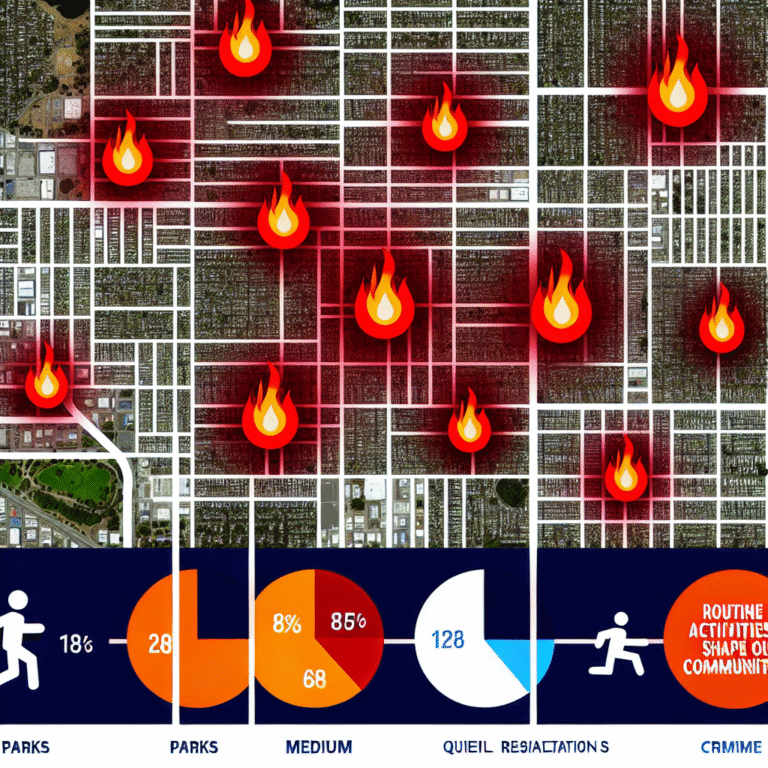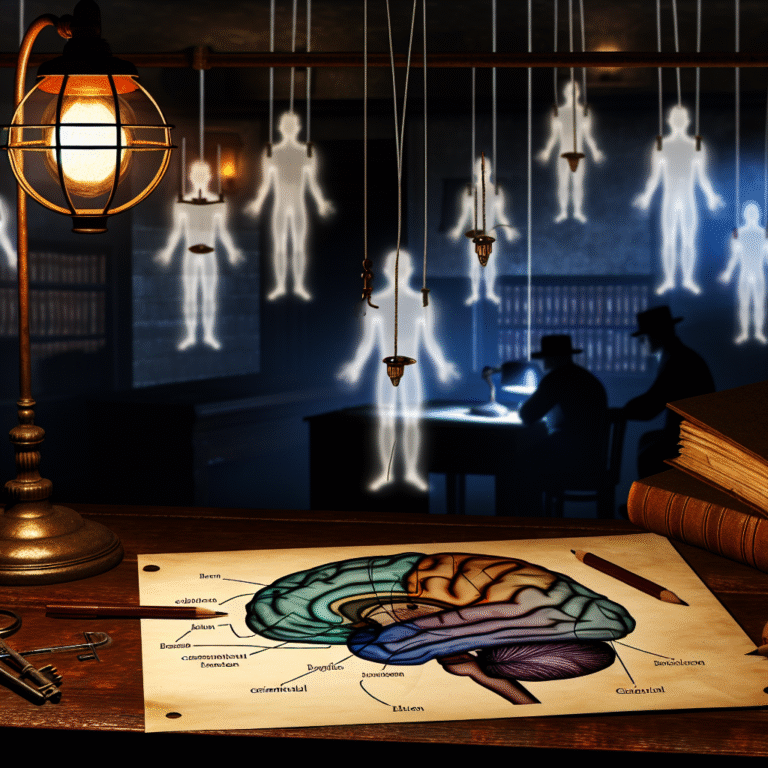
Introduction
Murder, a word that sends shivers down our spines, holds a puzzling position in human behavior. How can a person, once seemingly ordinary, plunge into the depths of violence? The journey from desperation to delusion in the minds of murderers is a complex tapestry woven with threads of psychological, sociopolitical, and emotional factors. Understanding this journey is not just a matter of academic interest; it can also illuminate the darkest corners of human nature and foster a conversation about prevention and rehabilitation. In this article, we delve into “From Desperation to Delusion: The Motivational Spectrum of Murderers,” exploring the pathways that lead individuals into heinous acts and the underlying motivations driving them.
Understanding the Motivational Spectrum
The Emotional Landscape of Murderers
When examining “From Desperation to Delusion: The Motivational Spectrum of Murderers,” it is essential to explore the emotional landscape that drives individuals to commit murder. Emotions such as fear, anger, despair, and hopelessness often play a crucial role.
Case Study: The Anguish of Desperation
Consider the case of John List, who in 1971 killed his entire family. List, a man facing severe financial troubles and mental health challenges, believed murder was the only escape from his situation. His actions were rooted in desperation: a deep-seated fear of losing his family’s honor and financial stability drove him to an unspeakable act.
Delusion: The Missing Piece
While desperation can lead individuals toward violence, delusion often complicates their motivations. Delusion involves a distorted perception of reality that can manifest in various ways, from belief in a ‘greater good’ to paranoia about enemies.
Case Study: David Berkowitz (Son of Sam)
Berkowitz infamously claimed that he was commanded to kill by a demon dog. His delusions, stemming from deep psychological issues, propelled him onto a lethal path. This highlights the intricate relationship between mental health and criminal behavior, illustrating a transition from genuine desperation to a level of delusion that makes heinous actions seem justified.
The Psychological Framework
To grasp the spectrum fully, we must incorporate psychological theories such as the General Aggression Model (GAM) and Frustration-Aggression Hypothesis.
| Model | Explanation |
|---|---|
| General Aggression Model (GAM) | Suggests that various factors such as individual traits, situational variables, and cognitive processes contribute to aggressive behavior. |
| Frustration-Aggression Hypothesis | Proposes that frustration inevitably leads to aggression, suggesting that unmet needs or desires escalate to violent acts. |
Societal Influences and Breaking Points
Another critical angle in our investigation of “From Desperation to Delusion: The Motivational Spectrum of Murderers” is societal influence. Individuals often face overwhelming societal pressures that can push them over the edge.
Case Study: The Murder of Marielle Franco
The assassination of Brazilian politician Marielle Franco in 2018 serves as a grim reminder of societal violence and political desperation. Franco was an advocate for marginalized communities in Rio de Janeiro, and her murder illustrates how political power struggles and social despair can intersect tragically.
Pathways to Murder
From Desperation: The Turning Point
Desperation often manifests in various forms—financial crises, emotional breakdowns, or social isolation. When an individual hits rock bottom, the mind can twist in unforeseen ways.
Example: Unemployment is one pressing factor leading to feelings of despair that can fuel such violent behavior. Studies have shown a higher correlation between economic downturns and spikes in violent crimes, as desperate individuals may feel they have nothing to lose.
Rationalizing Violence: From Delusion to Action
When individuals resort to delusion, they often craft narratives that justify their actions. This rationalization can serve as a deterrent against guilt or moral ambiguity.
Case Study: Andrea Yates
Yates, who drowned her five children, believed that she was saving them from a corrupt world. Her extreme delusions masked the tangible reality of her desperation and mental health struggles. Here, we see an alarming transformation from desperation to a delusional acceptance of murder as a ‘righteous’ act.
The Role of Substance Abuse
Substance abuse significantly exacerbates the spectrum of motivations leading to murder. Drugs and alcohol can fuel impulsive decisions, magnifying latent despair and delusions.
Example: Studies indicate that a considerable percentage of violent crimes are committed under the influence of substances. Individuals who may otherwise hesitate might find themselves enveloped in a fog of intoxication that distorts judgment and erases moral accountability.
| Substance Type | Associated Violence |
|---|---|
| Alcohol | Increases aggression and impulsivity. |
| Stimulants | Heightens paranoia and anxiety, often leading to violent outbursts. |
| Hallucinogens | Can cause disconnection from reality, leading to delusional violence. |
The Intersection of Mental Illness
Understanding mental illness is vital in our exploration of the motivations behind murder. Many individuals who commit these acts suffer from untreated psychological conditions, exacerbating their sense of desperation and delusion.
Mental Health Disorders
Various disorders can lead individuals down the path of violence:
- Psychosis: Understanding reality disconnects, often leading to delusional beliefs.
- Borderline Personality Disorder: Characterized by emotional instability, which can spark impulsive violence.
- Antisocial Personality Disorder: Often linked to a lack of empathy and disregard for societal norms.
Case Study: Richard Ramirez (Night Stalker)
Ramirez’s violent rampages in the 1980s can be partially traced to his turbulent upbringing and untreated mental health issues. His actions reflected a blend of desperation for validation and delusion about his own invincibility.
The Criminal Justice System’s Role
The criminal justice system can be pivotal in addressing the underlying issues related to mental health that contribute to violence. The debate on how to best serve those with mental health challenges within the system remains critical.
Example: Programs focusing on mental health treatment over incarceration, such as mental health courts, can divert individuals toward rehabilitation instead of punishment—addressing the root causes of violence.
Prevention and Interventions
Strategies for Addressing Desperation
To effectively combat the cycle of violence, addressing desperation before it escalates is crucial.
Community Support Programs: Initiatives that provide job placement, mental health support, and social services can reduce feelings of helplessness and isolation.
- Education and Awareness: Teaching emotional intelligence and conflict resolution can empower individuals to handle stressors without resorting to violence.
Dealing with Delusional Thinking
When delusion enters the picture, effective interventions focus on education and therapy.
Psychological Counseling: Engaging in cognitive-behavioral therapies can help resolve delusional thoughts and offer better emotional coping mechanisms.
- Support Groups: Peer-led groups can facilitate discussions that demystify delusions, providing community support for those wrestling with distorted perceptions.
Conclusion
In navigating the complex pathways of murderous behaviors through the lens of “From Desperation to Delusion: The Motivational Spectrum of Murderers,” we uncover a spectrum laden with psychological and sociological intricacies. While despair pushes individuals toward violence, delusions can create justifications that shroud their actions in a veil of distorted reality. Understanding these causes can help develop preventive strategies, emphasizing the importance of mental health, community support, and educational initiatives. The takeaway is clear: by addressing desperation early and demystifying delusion, society can create a safer, more compassionate environment that curtails the tragic timeline leading to murder.
FAQs
1. What are the main psychological factors behind murder?
The primary psychological factors include mental illnesses, emotional instability, and societal pressures, shaping the motivations behind such acts.
2. How can desperation lead to violent behavior?
Desperation can create a sense of hopelessness and urgency, leading individuals to irrational and aggressive actions as a means of escape or survival.
3. Is there a correlation between substance abuse and violent crimes?
Yes, many violent crimes are linked to substance abuse, where intoxication exacerbates impulsivity and diminishes moral judgment.
4. Can murder be prevented through community programs?
Absolutely. Community support programs focusing on mental health, job placement, and emotional education can alleviate feelings of despair among at-risk individuals.
5. What role does mental health play in the motivations for murder?
Mental health issues can distort perception and amplify feelings of desperation, often leading individuals to delusional justifications for murder.
By understanding and addressing the spectrum of motivations leading to murder, we can work towards a society where desperation doesn’t culminate in delusion and violence becomes a relic of the past.















